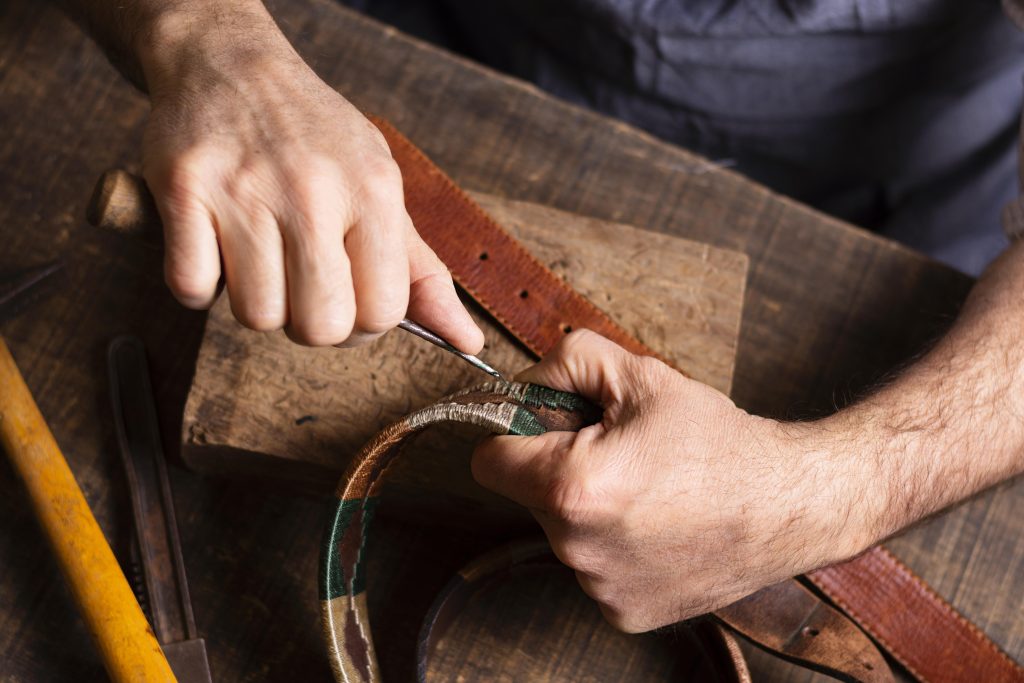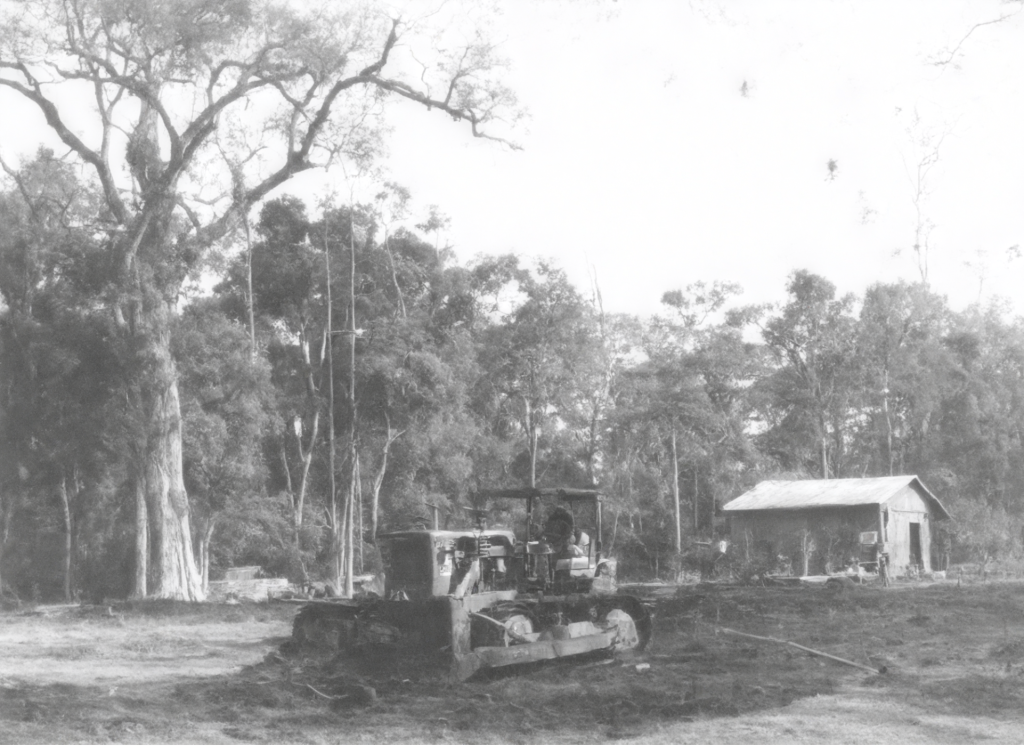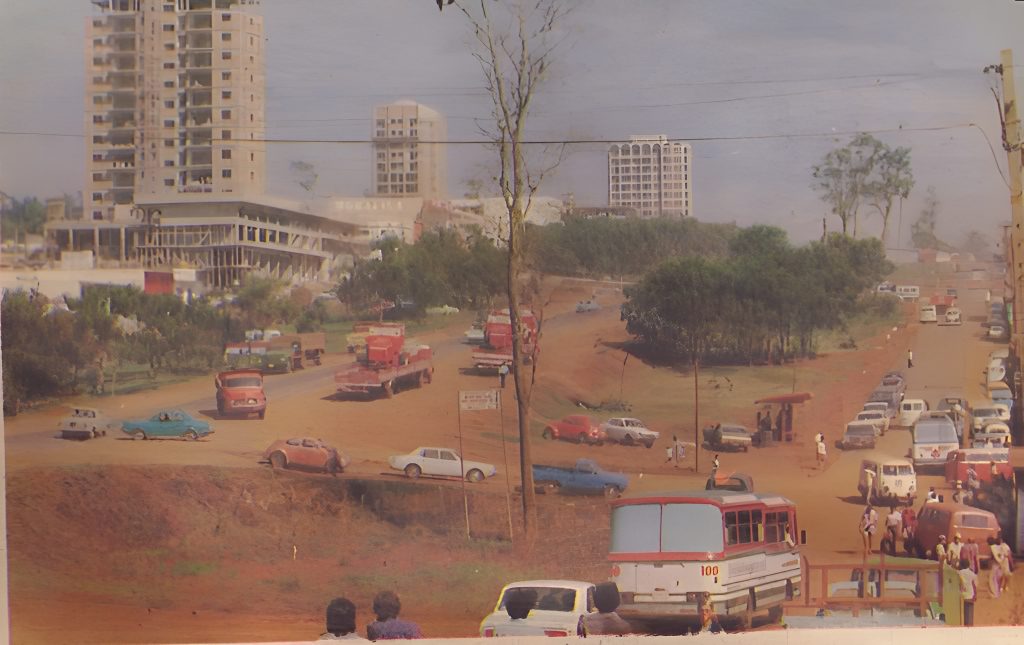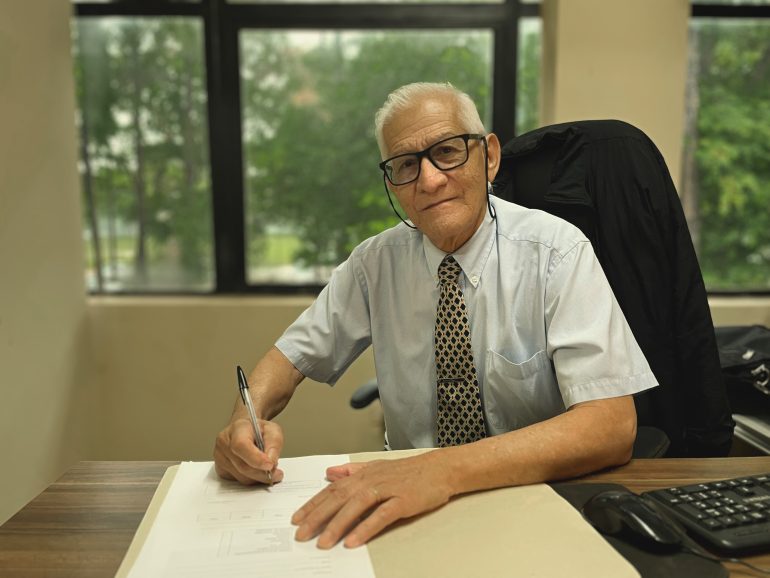Sergio César Torres, a 73-year-old leather craftsman, has spent more than six decades shaping both his trade and the city he calls home. One of Ciudad del Este’s earliest settlers, he arrived in 1964, when the region was still dense jungle and red clay. Through leatherwork, he built a living, raised a family, and witnessed the frontier town grow into Paraguay’s bustling border city.
“When we came, Ciudad del Este did not even exist,” he tells The Asunción Times. “Where the airport stands today was all jungle.”
From Luque to the eastern frontier
Born in Luque, near Asunción, Torres grew up in a humble but hardworking family of artisans. “My father was a tailor and my mother a dressmaker. He made the suits and pants; she made the dresses and shirts. That is how they supported us and sent us to school.”
When opportunity called, the family moved east. “We settled in Franco,” he recalls. “Back then, Ciudad del Este was just beginning to take shape. The streets were dirt, and when it rained, you couldn’t get anywhere.”
His father’s philosophy shaped their lives. “He never wanted to buy a house. He said that if there was no work, you had to be free to move.” Those early years were simple but purposeful — part of the foundation of a city that would become Paraguay’s economic engine.
A young craftsman learns his trade
At fourteen, Sergio César Torres began learning the craft that would define his life. “My first job was as a talabartero,” he says proudly. “Everything was made by hand — suitcases, bags, belts, whatever people needed.”
He explains that talabartero comes from talabarte, the strap soldiers once used to carry bullets. “We did not make those anymore, but the name stayed,” he adds. His workshop became his world — filled with the scent of leather and the steady rhythm of hammers. “I loved it so much that I could make anything people asked for. I learned not because I had to, but because I wanted to.”

Witnessing a city being born
In the 1960s, Ciudad del Este was still a dream taking shape. “Franco came first; Ciudad del Este came later,” he says. “There was only one ice-cream shop and a small cinema that showed films on sixteen-millimeter reels.”
He laughs at the memory. “The projector was tiny, like a toy. The cartoons came from Mexico and the U.S. At first they were in English, then with subtitles, and later they started dubbing them.”
Then came 1966, when the Friendship Bridge opened, linking Paraguay and Brazil. “That is when everything began to change. I dreamed of that bridge before it even existed.” Commerce flowed in, the jungle retreated, and the city began to pulse with life.

The art of leather and the life it built
Through the 1970s and 1980s, Torres perfected his craft. “There were some leatherworkers, but few who truly mastered it. I learned by watching and caring about every detail.”
In his small workshop beside his home, he crafted wallets, belts, and travel bags for locals and visitors alike. “I built my first house thanks to leather. That trade gave me everything I have.”
His old hammers and needles still rest neatly on a wooden bench — silent witnesses to a life defined by pride and craftsmanship.
Amada: The love that completed his story
In 1970, destiny introduced him to Amada, a young seamstress from the city of Villarrica. “I met her at Casa Cosmo,” he recalls. “She came with her mother, who was sewing shirts with magnetic buttons — that was the trend back then.”
Six years later, they married. “I was twenty-three, she was nineteen. Everything we had, we built together.”
They raised five children — Hugo César, Mónica, César Gustavo, Diana, and Amado de Jesús, whom they adopted after losing one of their own. “We had six, but one passed away,” he says softly. “So we adopted our dear son, Amado de Jesús.”
“She was my companion, my strength,” he says, smiling gently. “Everything I have, we made together.”
A tireless worker with three jobs
About twenty-five years ago, Torres balanced three jobs at once — his leather shop, a mini-market he ran from home, and a new role at the Governorate of Alto Paraná. “I started working for the government while keeping my other jobs. It was not easy, but I had to provide for my family.”
His discipline earned him respect throughout the community. Over time, he became an advisor — a position he has proudly held for twenty-five years. “I have always liked working,” he says simply. “It keeps me alive.”
Loss and legacy
The years brought both joy and deep sorrow. When Amada was diagnosed with breast cancer, Sergio cared for her through every stage. “It was very hard,” he says quietly. “She was strong, very strong, until the end.”
When she passed, he says, the house felt empty, but her presence never left. “She is still here, in everything.”
Now in his seventies, Torres lives in the same home they built, surrounded by their children, twelve grandchildren, and three great-grandchildren. “I have had the honour of watching two generations after me grow. Not everyone gets to see that. It is the greatest reward of life.”
Reflections on change
When asked how times have changed, his voice turns thoughtful. “Before, people were more innocent. We lived in the moment. We did not worry so much about the future. We just worked, shared, and lived.”
He smiles at the memory of the Sunday dances. “We called them pinglis. We would bring biscuits, sausages, and music. Everyone knew each other — there was trust. Everything felt purer, more innocent.”
He looks toward the skyline that now glimmers where jungle once stood. “This city grew with us. I saw it rise from red dirt to towers. It is still growing — just like we did.”

The man who watched a city grow
Even after a lifetime of work, Mister Torres still speaks of his craft with quiet reverence. His workshop breathes the scent of leather and time. “This city gave me everything. A home, a family, a trade. And I gave it my hands.”
Before ending the conversation, he offers one final reflection — a lesson carved from a lifetime of patience and love: “Work with honesty. Do not give up.”
For Sergio César Torres, Ciudad del Este is more than a city. It is living proof that perseverance, humility, and love can turn red clay into home.
Today, Ciudad del Este continues to grow — a city built by the hands and determination of people like Sergio César Torres. A statement that echoes the life of a craftsman who watched that prosperity rise from the red clay.


